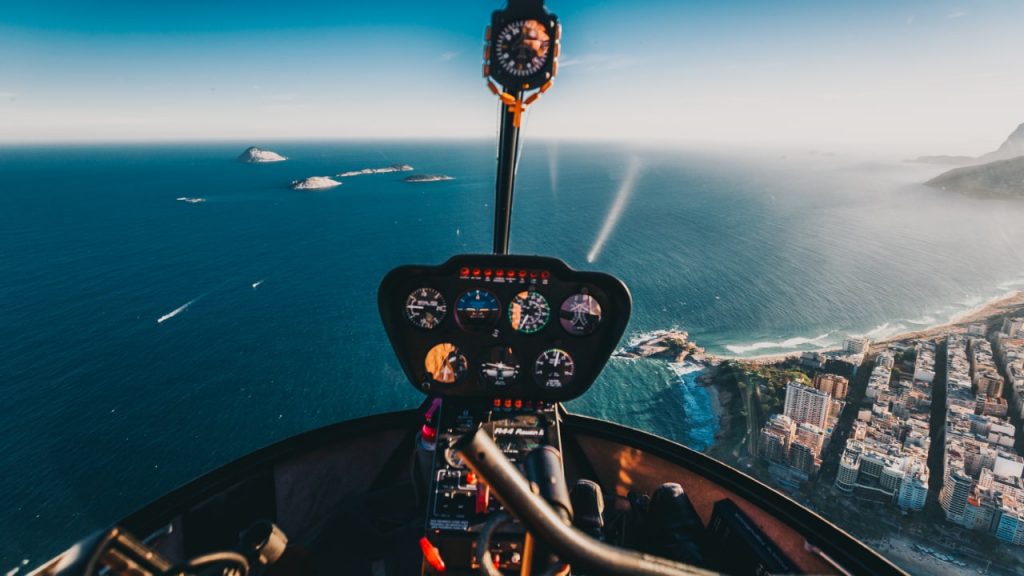
As technology continues to advance, it is becoming increasingly apparent that virtual reality (VR) is revolutionizing the way pilots are trained. VR technology provides a safe and controlled environment for pilots to practice their skills, while also offering a cost-effective alternative to traditional training methods.
In this blog post, we will explore the advantages of VR training in aviation education, examine examples of its successful implementation, discuss the challenges and limitations that come with it, and look at its future outlook.
Advantages of Virtual Reality Training
One of the most significant advantages of VR training is that it provides realistic simulations that mimic actual flight experiences. Pilots can practice various scenarios such as engine failures, severe weather conditions, or emergencies without putting themselves or others in danger. This type of immersive experience allows pilots to develop muscle memory and improve their reaction times in a way that traditional classroom or simulator-based training cannot replicate.
Another advantage of VR training is its cost-effectiveness compared to traditional training methods. Traditional pilot training involves renting aircraft and paying for fuel, maintenance, insurance, and other expenses. These costs can be prohibitively high for many aspiring pilots who want to gain more experience before taking on expensive certifications like commercial pilot licenses. However, with VR technology, organizations can offer affordable yet effective training programs without sacrificing quality.
Finally, VR training offers a safe and controlled environment for pilots to practice in. They do not have to worry about damaging equipment or injuring themselves during practice sessions. As a result, they can focus entirely on improving their skills without any distractions.
Examples of Successful Implementation
VR technology in pilot education has gained traction across various sectors in recent years. Here are three examples:
Case study 1: Use of VR training at commercial airlines Several airlines worldwide have incorporated VR technology into their pilot training programs successfully. For example, Qantas Airways introduced an Airbus A380 cockpit simulator using Oculus Rift headsets to train its pilots effectively. The airline claims that this approach saves them up to $30 million annually by reducing fuel consumption and wear-and-tear on aircraft.
Case study 2: Military use of VR training for combat pilots The military has been using simulators for pilot education since World War II but recently started incorporating advanced technologies like virtual reality into their programs. The US Navy developed the F/A-18 Super Hornet Tactical Operational Flight Trainer (TOFT), which uses an immersive visual display system combined with motion platforms to simulate various combat scenarios realistically.
Case study 3: General aviation and flight schools using VR technology Many general aviation organizations are adopting virtual reality as part of their pilot education curriculum because it provides a low-cost option for students who want more hands-on experience before moving onto real aircraft. One such organization is Redbird Flight Simulations based out of Austin Texas which specializes in producing FAA-certified flight simulators used by flight schools all around the world.
Challenges and Limitations
Despite its numerous benefits, there are still some challenges associated with implementing virtual reality technology into aviation education:
High initial costs associated with implementing VR technology: Although the long-term benefits outweigh the initial costs over time due to fewer resources needed compared with traditional methods.
Limited access to high-quality equipment and software: Accessing high-quality hardware like headsets & software can be challenging due to limited availability from manufacturers.
Lack of standardization across the industry: There needs to be standards set across all organizations regarding what constitutes compelling virtual reality-based learning experiences so that there’s consistency between different providers.
Future Outlook for Virtual Reality Training in Aviation
As technology continues advancing at breakneck speeds, we expect virtual reality-based learning experiences will become even more widespread within aviation over time. With advances in AI systems like machine learning algorithms coupled with IoT devices connected through big data platforms, these systems could collect massive amounts of data from individual users’ interactions within these simulations, allowing instructors greater insight into how well students are performing relative under different scenarios than ever before.
Moreover combining these emerging technologies together means they could create highly sophisticated simulations providing realistic representations of environments where students can learn better than ever before.
Conclusion:
Virtual reality-based learning experiences represent a significant leap forward when it comes to educating future generations of aviation professionals while being cost-effective compared with traditional methods.
It’s clear from examining the case studies above; organizations worldwide have already embraced this new method vigorously; however additional investment needs making sure everyone has access regardless if they’re attending university or working professionally within the industry.